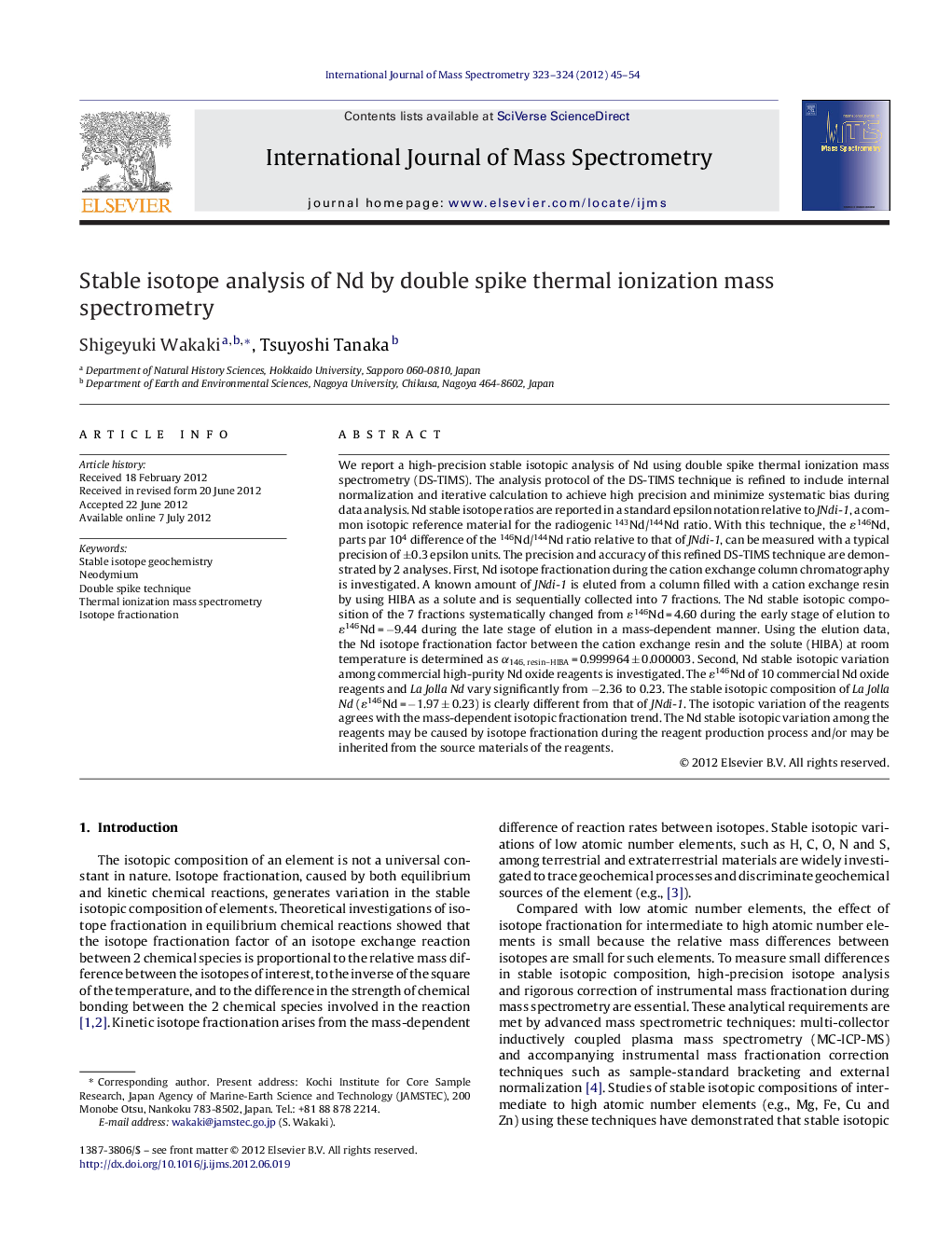| Article ID | Journal | Published Year | Pages | File Type |
|---|---|---|---|---|
| 1193117 | International Journal of Mass Spectrometry | 2012 | 10 Pages |
We report a high-precision stable isotopic analysis of Nd using double spike thermal ionization mass spectrometry (DS-TIMS). The analysis protocol of the DS-TIMS technique is refined to include internal normalization and iterative calculation to achieve high precision and minimize systematic bias during data analysis. Nd stable isotope ratios are reported in a standard epsilon notation relative to JNdi-1, a common isotopic reference material for the radiogenic 143Nd/144Nd ratio. With this technique, the ɛ146Nd, parts par 104 difference of the 146Nd/144Nd ratio relative to that of JNdi-1, can be measured with a typical precision of ±0.3 epsilon units. The precision and accuracy of this refined DS-TIMS technique are demonstrated by 2 analyses. First, Nd isotope fractionation during the cation exchange column chromatography is investigated. A known amount of JNdi-1 is eluted from a column filled with a cation exchange resin by using HIBA as a solute and is sequentially collected into 7 fractions. The Nd stable isotopic composition of the 7 fractions systematically changed from ɛ146Nd = 4.60 during the early stage of elution to ɛ146Nd = −9.44 during the late stage of elution in a mass-dependent manner. Using the elution data, the Nd isotope fractionation factor between the cation exchange resin and the solute (HIBA) at room temperature is determined as α146, resin–HIBA = 0.999964 ± 0.000003. Second, Nd stable isotopic variation among commercial high-purity Nd oxide reagents is investigated. The ɛ146Nd of 10 commercial Nd oxide reagents and La Jolla Nd vary significantly from −2.36 to 0.23. The stable isotopic composition of La Jolla Nd (ɛ146Nd = −1.97 ± 0.23) is clearly different from that of JNdi-1. The isotopic variation of the reagents agrees with the mass-dependent isotopic fractionation trend. The Nd stable isotopic variation among the reagents may be caused by isotope fractionation during the reagent production process and/or may be inherited from the source materials of the reagents.
Graphical abstractFigure optionsDownload full-size imageDownload high-quality image (105 K)Download as PowerPoint slideHighlights► High-precision Nd stable isotopic analysis is developed using the refined DS-TIMS technique. ► Typical precision of the analysis is 0.15 ɛ/amu for ɛ146Nd. ► With this precision, Nd stable isotopic difference of 0.3 ɛ/amu among geological materials is resolvable. ► Ten commercial Nd oxide reagents and La Jolla Nd show Nd stable isotopic variations of 1.30 ɛ/amu. ► Nd isotopic fractionation during cation-exchange column chromatography is clearly demonstrated.
